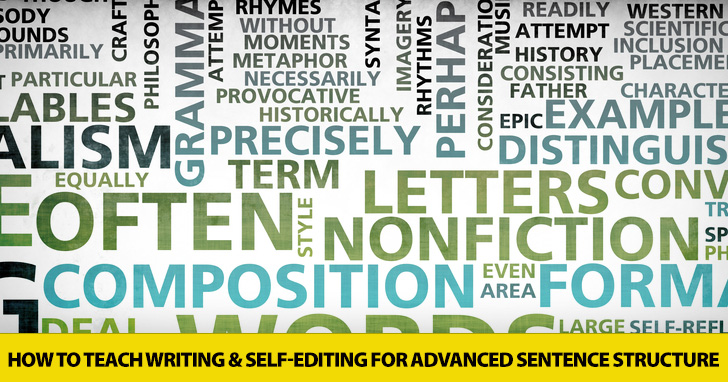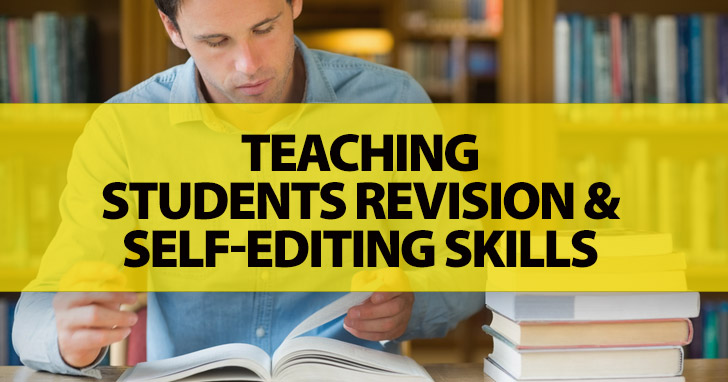Beyond “I Went to the Store. I Bought Bread”: Teaching Writing and Self-editing for Advanced Sentence Structure


The instructor will try to focus on it in different ways, puzzle over it, read parts out loud, and perhaps give it to another teacher for a second opinion. Finally, the teacher will probably sit down with student in her office and take about a half an hour sorting out what the student was trying to say so that she can give some suggestions for revision and editing so that the student can turn in a second draft that is at least a little more comprehensible.

Below are some examples of editing problems that can cause comprehension concerns. (Author’s note: a number of these examples were taken from a recent set of student papers in my developmental composition class at the college level; the topic was on the importance of names, culturally and personally, explaining why there are so many references to names in the examples.)

One large problem with novice writers in particular is the use of obscure references, such as acronyms (WCC), personal or local references (going to the Market on Thursday), or cultural references (a McMansion). Novice writers, especially young novice writers, have not yet necessarily developed the perspective to know that their audience may not recognize that WCC is Woodland Community College, that in the student’s city a large public event is the Thursday Farmer’s Market, when vendors from surrounding farms sell their products directly to the public, and that a McMansion is the kind of large, sprawling, standardized home purchased by newly rich people in California, especially, taking its name from McDonald’s and the idea of mass production. To avoid this problem of use of obscure or cultural references, students should be taught to be aware of their audience, that English today is a global language, with speakers all over the world, and to consider what readers outside their immediate circle of associates will understand.
Young or novice students are just entering the academic world, and there often is a tendency to lapse into conversational usage as the student has not yet learned academic usage well. This usually, although it can be startling (e.g., use of “yeah,” and “last time I checked”), does not present a problem. However, at times conversational usage, such as the historical present, or use of present tense verbs to discuss a past tense event (e.g., “It’s the first day of school, you know, and the teacher walks in and starts to take attendance….”) While this use of the historical present does not create a comprehension problem, usually, in a face-to-face discussion, it can be a concern in a written form due to the reduced context and the inability of the audience, the reader, to ask for clarification on what the time frame of the narrative is when the student slips between tenses.
Related to the issue of conversational usage in academic writing is the concern of word choice. Again, many students are just learning the academic register, or academic usage, and are just trying out its structures and vocabulary. This in itself is a positive development, this desire to stretch and grow their academic usage. It can, however, create some sentences that are a challenge to read: e.g. “I strive for my name to be known….” (What “strive” means here is not exactly clear); “If someone has just met me and calls me ‘sweetheart,’ I get taken back…” (rather than “taken aback,” a different meaning).
Just as new writers are just beginning to be exposed to a new academic vocabulary, they are also just learning more advanced and complex sentence structures than the ones they likely are exposed to in everyday conversation. Again, this is a positive development overall, but it can lead to some pretty tangled sentences: “I remember a time that I was young in school in Los Angeles that I was called a wrong name that I didn’t like so that…” While not technically wrong, some sentences have so many dependent clauses piled up, for example, that they become very hard to follow.
“I am a young lady. And I feel like it’s important to know someone’s name…” What is the connection between being a young lady, specifically (rather than an older man, for example), and knowing another’s name? Sometimes a brief conversation or querying the student in the margins of the paper is called for to ferret out these connections that students see that the reader doesn’t, necessarily.
However, as it is neither practical nor desirable for the instructor to hold conferences with students regarding every obscure reference or poorly chosen word or snarled grammatical structure, students must learn to edit their own work.

Because students are learning a new kind of writing, academic writing, and the teacher will not always be able to edit their work (nor is that desirable), students need to be able to edit their own work.
One of the first steps in learning to self-edit is to develop a sense of audience. Often students think that no one else is reading their work, or at most, the audience is the teacher (who will of course understand everything the student writes). Therefore students have to be actively taught a sense of audience. This can be accomplished in a number of ways:
Having students read their own aloud either to themselves or each other helps them hear, for example, monotonous sentence structure or awkward phrasing. As they get used to the revision process, students often take this step themselves without being asked.
Once students have been editing and revising their own work for awhile, they begin to develop a sense of their own problem areas and can then go back and check their work and edit for those specific problems. If the student already knows he has problems with run-on sentences, and has been taught how to edit for them, he can go back and check that there are the correct connections between independent clauses in his work.
Revising and editing one’s own work is never easy. Often even professional writers will pay an editor to help revise their work. Of course, this is not possible or even desirable for the beginning writer. However, by learning some general principles such as keeping an audience in mind and specific techniques such as targeting and editing for problem areas, students can learn to turn a critical eye to and revise and edit their own work.